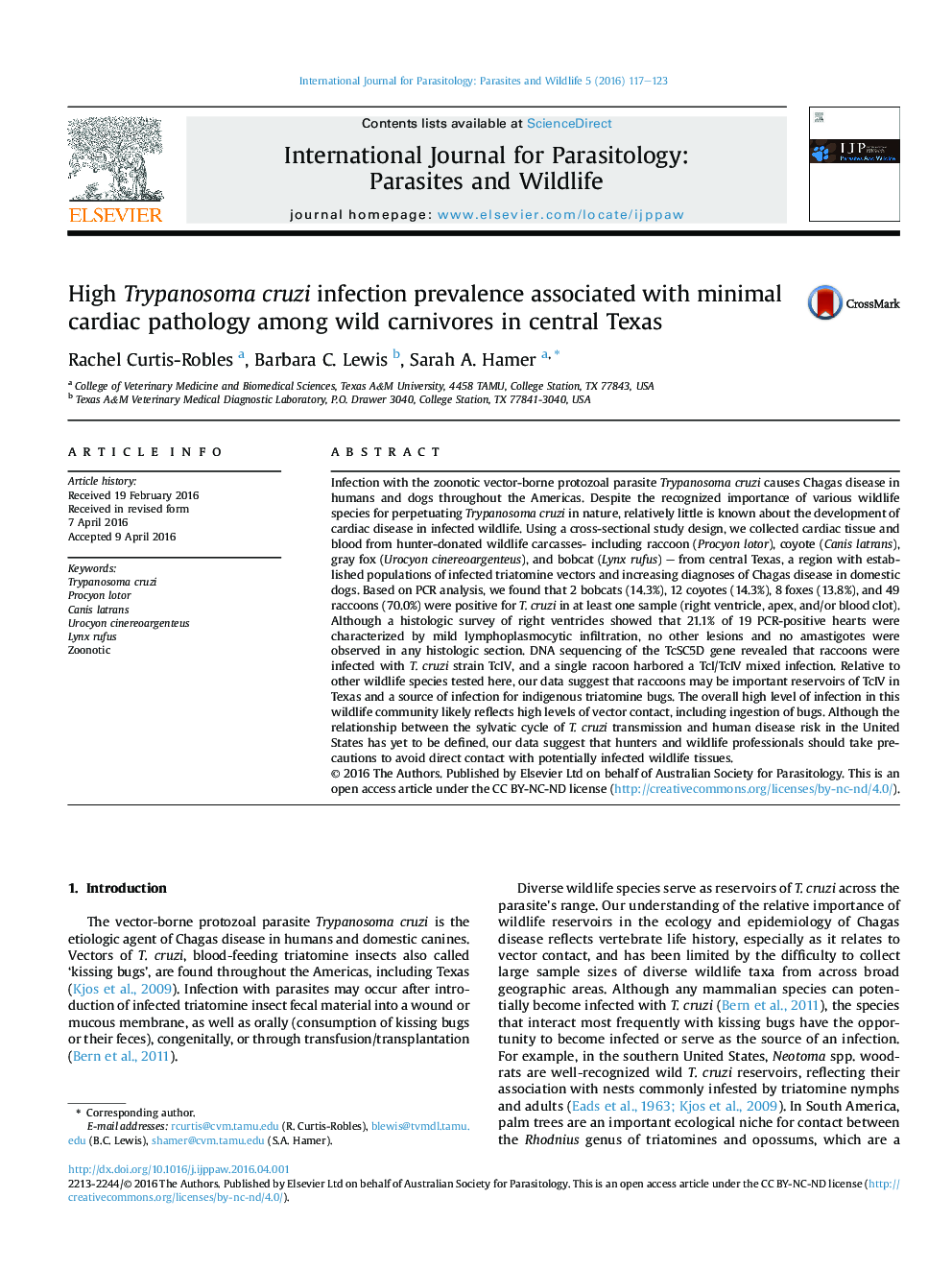| کد مقاله | کد نشریه | سال انتشار | مقاله انگلیسی | نسخه تمام متن |
|---|---|---|---|---|
| 2055221 | 1075735 | 2016 | 7 صفحه PDF | دانلود رایگان |
• Trypanosomacruzi infection in raccoons was greater than in coyote, fox, and bobcats.
• No amastigotes were observed in any right ventricular histologic sections.
• Mild lymphoplasmacytic myocarditis was observed in 21.1% of infected animals.
• The majority of raccoons were infected with Tc IV.
• People who contact wildlife organs should use precautions to reduce infection risk.
Infection with the zoonotic vector-borne protozoal parasite Trypanosoma cruzi causes Chagas disease in humans and dogs throughout the Americas. Despite the recognized importance of various wildlife species for perpetuating Trypanosoma cruzi in nature, relatively little is known about the development of cardiac disease in infected wildlife. Using a cross-sectional study design, we collected cardiac tissue and blood from hunter-donated wildlife carcasses- including raccoon (Procyon lotor), coyote (Canis latrans), gray fox (Urocyon cinereoargenteus), and bobcat (Lynx rufus) – from central Texas, a region with established populations of infected triatomine vectors and increasing diagnoses of Chagas disease in domestic dogs. Based on PCR analysis, we found that 2 bobcats (14.3%), 12 coyotes (14.3%), 8 foxes (13.8%), and 49 raccoons (70.0%) were positive for T. cruzi in at least one sample (right ventricle, apex, and/or blood clot). Although a histologic survey of right ventricles showed that 21.1% of 19 PCR-positive hearts were characterized by mild lymphoplasmocytic infiltration, no other lesions and no amastigotes were observed in any histologic section. DNA sequencing of the TcSC5D gene revealed that raccoons were infected with T. cruzi strain TcIV, and a single racoon harbored a TcI/TcIV mixed infection. Relative to other wildlife species tested here, our data suggest that raccoons may be important reservoirs of TcIV in Texas and a source of infection for indigenous triatomine bugs. The overall high level of infection in this wildlife community likely reflects high levels of vector contact, including ingestion of bugs. Although the relationship between the sylvatic cycle of T. cruzi transmission and human disease risk in the United States has yet to be defined, our data suggest that hunters and wildlife professionals should take precautions to avoid direct contact with potentially infected wildlife tissues.
Figure optionsDownload as PowerPoint slide
Journal: International Journal for Parasitology: Parasites and Wildlife - Volume 5, Issue 2, August 2016, Pages 117–123
